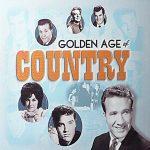U.S. Post Office introduces zip codes
On July 1, 1963, the United States Postal Service (USPS) introduces the Zone Improvement Plan as part of a plan to improve the speed of mail delivery, inaugurating the use of machine-readable ZIP codes to facilitate the efficient sorting of mail at a national level.
The idea wasn’t totally new. In 1943, the Post Office had created numbered zones for more than 100 urban areas around the country. But in the post-WWII boom, that system quickly became inadequate. Between 1943 and 1962, annual mail volume doubled from 33 billion to 66.5 billion pieces, and the average mailed letter passed through an average of 17 sorting stops. Suburbs were sprouting exponentially, and mail transport was shifting from railway to highway and air, making old urban hub systems obsolete.
To automate and streamline this sorting process, the Post Office established the Nationwide Improved Mail Service program, which standardized physical dimensions of the mail and created the five-digit structured code, or ZIP number.
Who Helped Create Zip Codes?
The first three digits were invented by Robert Moon, a postal inspector who first introduced his idea in 1944. Another inspector, H. Bentley Hahn, developed the last two digits.
What do the Numbers Represent?
The numbers referred to a new and streamlined mail-hub hierarchy, consisting of regions, subregions, post offices and delivery stations.
Development of the Mr. Zip Cartoon Campaign
To launch the system, the USPS invested in a massive public relations campaign throughout the 1960s, first targeting bulk mailers like government agencies and magazine publishers, and then individual citizens. Massive advertising campaigns celebrated the new codes in magazines, newspapers, radio, television and public transit.
A cartoon mascot named Mr. ZIP popped up on lunch boxes, tin banks and board games. Popular singer Ethel Merman recorded a promotional jingle to the tune of “Zip-A-Dee-Doo-Dah.” Even cartoon sleuth Dick Tracy endorsed the system. By the end of the decade, ZIP codes had achieved broad public acceptance.
Adding to the Zip Code in 1983
In 1983, with the complexity and volume of mail increasing exponentially, the USPS introduced an extended code called ZIP+4. And in 2024, the agency announced that it was reviving the Mr. Zip character as a source of licensing revenue, with products including children's books, plush toys, bobbleheads, apparel and smartphone cases.





No comments:
Post a Comment